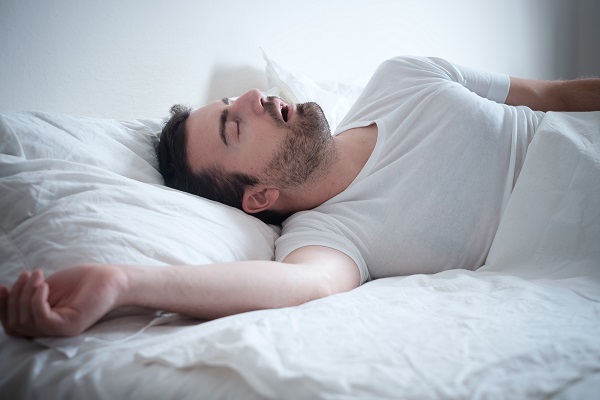Oral Appliance Therapy vs. CPAP Machines

Some of the treatment options for sleep apnea include CPAP machines, oral appliances, surgery or lifestyle changes. It is always important to seek treatment for the condition early. If sleep apnea is left untreated, it can lead to high blood pressure, heart disease, stroke, diabetes and many other complications. However, several factors have to be considered before choosing one treatment option over another. Each treatment has its own advantages.
Oral appliance therapy and CPAP
Obstructive sleep apnea (OSA) occurs when something blocks all or part of the upper airway when a person sleeps. Two of the most common and effective treatment options for obstructive sleep apnea are oral appliances and continuous positive airway pressure (CPAP). A doctor who is qualified to treat OSA can recommend the most ideal treatment option depending on a patient’s condition and many other factors. Here are the similarities and differences between oral appliance therapy and CPAP.
CPAP
A person who has severe or moderate sleep apnea can benefit from using a machine that delivers air pressure via a mask as someone sleeps. CPAP blows air down a person’s throat with continuous pressure to keep the airways open while someone is sleeping. The treatment depends on the use of a CPAP machine. The machines are lightweight, small, fairly quiet and convenient for travelers. CPAP has many benefits. This treatment option can keep the airways open as someone sleeps, ease snoring, improve sleep quality, lower blood pressure and relieve daytime sleepiness.
Many people feel well-rested and alert after they start CPAP. However, it may take some time for someone to get used to the device. Some patients often have difficulty sleeping especially during the first nights of treatment and others find them to be uncomfortable. But, with practice, most people eventually learn to adjust the tension of the mask straps to obtain a secure and comfortable fit. People should contact a doctor if they have problems with a CPAP machine or are still snoring or start snoring again despite treatment.
Oral appliances
Oral appliances have been designed to keep a patient’s throat open. These devices may be easier to use compared to CPAP. Some of them are designed to ensure the throat is open by bringing the jaw forward. This may not only relieve snoring but also mild to moderate obstructive sleep apnea.
These dental devices are a good alternative for people who are dissatisfied or those who have not been helped by CPAP. Oral appliances must be fitted by a qualified dentist. The device should also be worn nightly. Some common oral appliances are tongue-retaining devices and mandibular advancement devices.
Takeaway
With CPAP therapy, a patient has to wear a mask that covers the mouth and nose and connects to a tube that makes it possible for air pressure to ensure the airway is open during sleep. Oral appliance therapy involves wearing a custom-fit dental device during sleep. An oral appliance will support the jaw and help keep the airway open. Both CPAP machines and oral appliance therapy can help to treat your sleep apnea. Your doctor can help you determine the ideal treatment option.
Request an appointment here: https://familychoicedentistry.com or call Family Choice Dental at (505) 634-5657 for an appointment in our Albuquerque office.
Check out what others are saying about our dental services on Yelp: Oral Appliance in Albuquerque, NM.
Related Posts
OSA, or obstructive sleep apnea, is a health issue that should receive proper treatment. Your dentist can help you manage this disorder with the proper dental appliance. The oral device will be custom-fit for your needs. Here are the dental appliances that can help with your sleep apnea.This problem involves the blockage of the airways…
Sleep apnea affects tens of millions of American adults. Without an effective treatment solution, obstructive sleep apnea can cause symptoms that affect the patient negatively at night and throughout each day. The good news is that there are effective treatment solutions for sleep apnea. In this review, we discuss the most popular options from a…
Sleep apnea, also called obstructive sleep apnea (OSA), is a common condition that affects more than 50 million people in the United States and more than 1 billion people worldwide. In this review, we discuss the signs of sleep apnea that indicate a need for a professional diagnosis.The most common indicators of sleep apnea are…
Dental sleep medicine is a specialized field in general dentistry. It applies knowledge on the oral appliance theory for a sleep-disordered breathing treatment. As such, loud snoring and the different types of sleep apnea are examples. Resting is relaxing, yet it becomes irritating when you find yourself drifting away with the loud snoring sound of…
